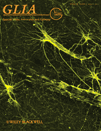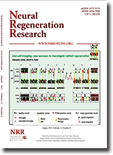
EXPERIMENTAL NEUROLOGY
Scope & Guideline
Illuminating the Future of Neurology and Development.
Introduction
Aims and Scopes
- Neuroinflammation and Immune Responses:
Research in this area examines how neuroinflammatory processes contribute to various neurological disorders, including the role of microglia and other immune cells in the central nervous system. - Neurodegenerative Diseases:
Studies often focus on the mechanisms underlying neurodegenerative conditions such as Alzheimer's, Parkinson's, and amyotrophic lateral sclerosis (ALS), including genetic, molecular, and environmental factors. - Neuroprotection and Repair Mechanisms:
The journal publishes research on neuroprotective strategies and the mechanisms of neural repair following injury, including the use of stem cells, growth factors, and various pharmacological agents. - Neuronal Plasticity and Regeneration:
Research investigates the potential for neuronal regeneration and plasticity in response to injury or disease, including the role of exercise and rehabilitation techniques. - Translational Research:
The journal emphasizes studies that bridge basic neuroscience research and clinical applications, aiming to translate findings into therapeutic strategies for neurological disorders. - Neural Circuitry and Behavior:
Papers explore the relationship between neural circuitry and behavior, utilizing various animal models to understand the mechanisms of action for different neurological interventions.
Trending and Emerging
- Gene Therapy and Genetic Modifications:
There is a growing trend towards exploring gene therapy and genetic modifications as potential interventions for neurological disorders, highlighting advances in molecular techniques and personalized medicine. - Neuroinflammation as a Therapeutic Target:
Research increasingly emphasizes the role of neuroinflammation in neurological diseases, focusing on modulating inflammatory pathways as therapeutic strategies to alleviate symptoms and promote recovery. - Neuroprotective Effects of Lifestyle Interventions:
Studies are increasingly investigating lifestyle factors such as exercise, diet, and environmental enrichment as potential neuroprotective strategies, linking behavioral interventions to neurobiological outcomes. - Microbiome-Gut-Brain Axis:
Emerging research on the microbiome's influence on neurological health and disease is gaining traction, with studies exploring how gut health can impact brain function and neuroinflammation. - Advanced Imaging and Monitoring Techniques:
Innovations in imaging and monitoring technologies, including in vivo imaging and optogenetics, are being utilized to better understand neural dynamics and the effects of interventions on brain function. - Interdisciplinary Approaches to Neurorehabilitation:
There is a notable trend towards interdisciplinary approaches that integrate neurology, psychology, and rehabilitation sciences to enhance recovery strategies for patients with neurological impairments.
Declining or Waning
- Traditional Pharmacological Interventions:
There appears to be a waning interest in traditional pharmacological approaches for treating neurological disorders, as more emphasis is placed on novel therapeutic strategies, including gene therapy and regenerative medicine. - Animal Models with Limited Translational Value:
Research utilizing outdated animal models that do not effectively translate to human conditions is becoming less common, as there is a push for more relevant and sophisticated models. - Epidemiological Studies:
The frequency of purely epidemiological studies in the context of neurological diseases has decreased, possibly due to a greater focus on mechanistic and experimental research. - Basic Neuroanatomical Studies:
While foundational knowledge is critical, there has been a relative decline in publications focused exclusively on basic neuroanatomical descriptions without integrative functional insights.
Similar Journals

NEUROCHEMISTRY INTERNATIONAL
Driving Progress in Neuroscience Through Rigorous ResearchNEUROCHEMISTRY INTERNATIONAL, published by Pergamon-Elsevier Science Ltd, offers a premier platform for researchers and professionals in the realms of cell biology and cellular and molecular neuroscience. Established in 1980 and continuing its passion for advancing the field, this esteemed journal enhances scientific collaboration with a notable 2023 Q2 ranking in both relevant categories, placing it among the top-tier publications in its discipline with a Scopus rank of 23/97 for Cellular and Molecular Neuroscience. With its focus on groundbreaking research, the journal provides a wealth of vital data and insights that drive forward our understanding of neurochemistry and its implications in health and disease. While not an Open Access journal, NEUROCHEMISTRY INTERNATIONAL is integral for professionals, academics, and students aiming to stay at the forefront of neurobiological research innovations, making significant contributions to both academia and clinical applications.

GLIA
Leading the Charge in Neuroscience InnovationGLIA is a premier journal in the fields of Cellular and Molecular Neuroscience and Neurology, published by WILEY. With an impressive track record since its inception in 1988, GLIA has become an essential resource for researchers and professionals interested in the complexities of glial cells and their roles in the nervous system. Featuring articles that encompass a wide range of topics, from basic research to clinical implications, the journal is committed to advancing our understanding of neurological functions and disorders. Although not an open access publication, GLIA maintains its reputation with a significant impact factor, consistently ranking in the Q1 category as noted in 2023 Scopus rankings. With its comprehensive scope and high-quality peer-reviewed content, GLIA serves as a vital platform for disseminating groundbreaking research in the ever-evolving landscape of neuroscience.

NEUROREPORT
Unraveling the complexities of the nervous system.NEUROREPORT is a distinguished journal in the field of neuroscience, published by Lippincott Williams & Wilkins. With an ISSN of 0959-4965 and an E-ISSN of 1473-558X, the journal has established itself as a vital platform for disseminating innovative research and developments in the dynamic area of neuroscience since its inception in 1990. Currently, it is positioned in the Q3 category of the 2023 Journal Rankings, reflecting its respectable standing within the community of neuroscience professionals, ranked #74 out of 113 in general neuroscience on Scopus, placing it in the 34th percentile. While it operates on a traditional subscription model, NEUROREPORT is committed to fostering knowledge sharing in the realm of neurobiology, neuropharmacology, and cognitive studies among researchers, professionals, and students alike. With its broad scope and commitment to scientific excellence, the journal continues to be a cornerstone for those seeking to stay ahead in the evolving landscape of neurological research.

Neural Regeneration Research
Fostering global collaboration in neural regeneration.Neural Regeneration Research is a premier Open Access journal, published by Wolters Kluwer Medknow Publications, dedicated to advancing the field of Developmental Neuroscience. Since its inception, the journal has established itself as a valuable resource for researchers, professionals, and students alike, providing a comprehensive platform for disseminating the latest findings and methodologies in neural regeneration. With an impressive Scopus Ranks placement of #3 out of 49 in its category and a Q2 Quartile ranking, the journal boasts a significant impact within the academic community, reflecting its high quality and relevance. Since adopting an Open Access model in 2011, it has expanded access to critical research in neural regeneration, fostering collaboration and innovation among scholars globally. Covering various aspects of neuroscience, its converged years from 2006 to 2025 highlight the journal's commitment to ongoing discourse and discovery. Situated in China, the journal not only promotes local insights but also connects the global research community to pressing topics in neuroscience, making it an essential read for anyone involved in this dynamic field.

Neuroscience Insights
Your Gateway to Cutting-Edge Neuroscience InsightsNeuroscience Insights, published by SAGE Publications Ltd, is an esteemed open-access journal dedicated to advancing the field of neuroscience. Initiated in 2019, this journal provides a platform for high-quality research encompassing a broad spectrum of topics within neuroscience, positioning itself prominently in the academic community with a 2023 ranking in the second quartile (Q2) of neuroscience journals. With an impressive Scopus rank of #42 out of 113, Neuroscience Insights showcases significant contributions that facilitate understanding and innovations in general neuroscience. As an open-access journal, it ensures that groundbreaking research is widely disseminated, promoting collaboration and accessibility for researchers, professionals, and students worldwide. With an ongoing commitment to foster interdisciplinary dialogue within the neuroscience arena, Neuroscience Insights serves as a crucial resource for those looking to stay at the forefront of neuroscientific advancements.

NEUROLOGICAL SCIENCES
Innovative research shaping the future of neurological sciences.NEUROLOGICAL SCIENCES, published by SPRINGER-VERLAG ITALIA SRL, is a premier journal that has been a cornerstone in the field of neurology and related disciplines since its inception in 1996. With an impressive Q1 ranking in Dermatology and Q2 rankings in Neuroloy (clinical) as well as Psychiatry and Mental Health, this journal consistently delivers high-quality peer-reviewed research that informs and shapes clinical practice. The journal boasts a significant presence on Scopus, positioned in the 89th percentile for Dermatology, 73rd for Psychiatry and Mental Health, and 72nd for Neurology (clinical), reflecting its influential contributions to medical knowledge. Open Access options are available, ensuring that this valuable research is accessible to a wider audience committed to advancing their understanding of neurological sciences. As it converges into future years (2024 and beyond), NEUROLOGICAL SCIENCES aims to continue foster collaboration and innovation amongst researchers, professionals, and students within the neurology and mental health domains, making it an indispensable resource for those dedicated to improving patient outcomes and advancing scholarly dialogue.

NEUROSCIENTIST
Driving Excellence in Neuroscience ScholarshipNEUROSCIENTIST is a leading journal in the field of clinical neurology and neuroscience, published by SAGE Publications Inc. With an impressive impact factor reflected in its Q1 quartile ranking in both clinical neurology and miscellaneous neuroscience as of 2023, this journal positions itself as a crucial platform for the latest research and advancements in the neural sciences. Spanning from 1995 to 2024, NEUROSCIENTIST features a range of high-quality, peer-reviewed articles that cater to researchers, practitioners, and students alike. Although it does not offer Open Access options, the journal remains a vital resource owing to its Scopus rankings, situating it within the top percentile of its categories: ranked #28 out of 400 in clinical neurology and #15 out of 113 in general neuroscience. The journal's commitment to disseminating significant findings underlines its importance in fostering advancements in neurological understanding and treatment.

Journal of Neuroinflammation
Connecting researchers to transform the landscape of neuroinflammation.Journal of Neuroinflammation is a premier open-access journal published by BMC that has been at the forefront of research in the field since its inception in 2004. With a strong focus on the intricate interplay between the nervous system and immune responses, this journal aims to create a forum for the dissemination of high-quality research that informs our understanding of neuroinflammation and its implications in neurological disorders. Positioned in the top quartile across multiple categories including Cellular and Molecular Neuroscience, Immunology, and Neurology, the journal ranks impressively within the Scopus database, ensuring visibility to the global research community. The Journal of Neuroinflammation provides a vital platform for researchers and professionals to share groundbreaking findings, methodologies, and reviews that advance science and foster collaboration. With its commitment to open access, the journal ensures that its content is accessible to a broad audience, enhancing the dissemination of knowledge in this critical field of study.

Molecular Neurodegeneration
Pioneering discoveries in cellular and molecular neuroscience.Molecular Neurodegeneration is a leading journal published by BMC, dedicated to advancing the field of neurodegeneration through high-quality, open-access research. Since its inception in 2006, this peer-reviewed journal has provided a pivotal platform for the dissemination of innovative findings in the realms of Cellular and Molecular Neuroscience, Molecular Biology, and Clinical Neurology. With a stellar impact factor and listed in the prestigious Q1 category in multiple relevant categories, it ranks among the top publications in the field—specifically, it holds the #3 position in Neuroscience and #6 position in Clinical Neurology based on Scopus metrics. Researchers, professionals, and students alike will find significant value in the open access format, which fosters unrestricted sharing of knowledge, ensuring that emerging ideas in neurodegeneration reach a global audience. Based in London, United Kingdom, the journal promises a comprehensive scope that addresses critical questions in neurobiology, making it an essential resource for anyone interested in the molecular mechanisms underlying neurodegenerative diseases.

RESTORATIVE NEUROLOGY AND NEUROSCIENCE
Driving Discovery: Elevating the Standards of Neurological CareRESTORATIVE NEUROLOGY AND NEUROSCIENCE, published by IOS PRESS, is a premier journal dedicated to advancing the fields of neurology and neuroscience. Since its inception in 1989, this journal has played a crucial role in disseminating cutting-edge research findings and innovative therapeutic approaches that aim to restore neurological function and improve patient outcomes. With a focus on developmental neuroscience and clinical neurology, the journal holds a 2023 Scopus ranking of #129 out of 400 in clinical neurology, and #15 out of 37 in developmental neuroscience, reflecting its significant influence in these domains. Although it operates on a non-open access model, RESTORATIVE NEUROLOGY AND NEUROSCIENCE offers valuable insights for researchers, healthcare professionals, and students seeking to deepen their understanding of neural restoration mechanisms and therapeutic strategies. Located in Amsterdam, Netherlands, the journal continues to foster scholarly dialogue and innovation, contributing to the global advancement of neuroscience and neurology.